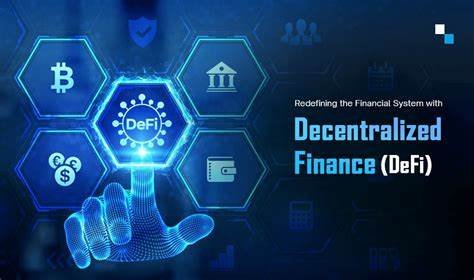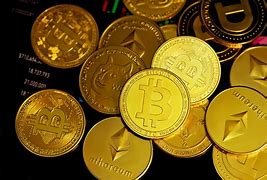The global financial system is evolving at an unprecedented pace, and leading this transformation is Decentralized Finance (DeFi). While blockchain technology has already made a significant impact in the world of cryptocurrency, its integration into financial systems has created a new era of financial freedom, transparency, and innovation. By removing centralized intermediaries, DeFi protocols offer a fresh approach to managing, investing, and transacting money. As we move toward 2025, these decentralized platforms are on track to disrupt traditional banking, offering an alternative to outdated financial systems that have long held global power.
The surge in DeFi adoption is not just a passing trend but a powerful movement that is reshaping the financial landscape. Decentralized finance, which operates on blockchain technology, is now accessible to anyone with an internet connection, enabling individuals and institutions to gain greater control over their financial activities. Financial inclusion, lower fees, and elimination of intermediaries have made DeFi a compelling alternative to conventional banks and lending institutions.
Understanding Decentralized Finance (DeFi)
DeFi is the umbrella term for a set of financial services and tools built on blockchain networks that aim to replace traditional financial systems. Instead of relying on centralized financial institutions such as banks, credit card companies, or insurance firms, DeFi platforms use smart contracts and cryptocurrency to enable peer-to-peer (P2P) transactions.
These protocols offer a wide range of services, including lending and borrowing, trading, yield farming, and asset management, all powered by blockchain technology. The shift toward decentralized financial systems is rooted in the need for greater accessibility, transparency, and security.
With the global economy becoming increasingly digital, more individuals and businesses are adopting decentralized financial tools, and the benefits are becoming impossible to ignore. According to analysts, DeFi protocols are expected to continue their growth and eventually represent a significant portion of global financial activity.
Key DeFi Protocols Reshaping Finance
- Uniswap: As one of the most popular decentralized exchanges (DEX), Uniswap has changed the way people trade digital assets. Unlike traditional exchanges, Uniswap allows users to swap tokens directly from their wallets, cutting out the need for intermediaries. Uniswap’s automated market maker (AMM) model ensures liquidity by relying on users to add liquidity to various trading pools in exchange for a share of transaction fees. As a result, Uniswap has made it easier for traders to exchange tokens seamlessly, while also allowing liquidity providers to earn passive income through rewards.
- Aave: Aave is a decentralized lending protocol that allows users to borrow and lend digital assets without the involvement of a third-party intermediary. Users can supply their assets into liquidity pools to earn interest, while borrowers can access funds without needing traditional credit checks. Aave’s unique features, such as flash loans (unsecured loans that must be paid back within a single transaction), have made it one of the most innovative platforms in the DeFi space.
- Compound: Compound is another lending and borrowing protocol that allows users to deposit their digital assets and earn interest. Compound’s algorithmic interest rates are driven by supply and demand, offering better rates than traditional banks. Users can also borrow assets against collateral, which is determined by smart contracts that automatically adjust rates based on market conditions.
- MakerDAO: MakerDAO is a decentralized platform that allows users to borrow a stablecoin, DAI, by locking up collateral in the form of cryptocurrencies. The platform operates without relying on a central authority, and its stability is maintained by an automated system of smart contracts. MakerDAO has become a vital pillar of the DeFi ecosystem, providing an accessible alternative to traditional borrowing systems and offering decentralized credit.
- Yearn.finance: As a decentralized yield optimization platform, Yearn.finance allows users to earn higher returns on their investments by allocating funds to the most profitable DeFi protocols. Yearn.finance employs advanced algorithms to automatically move funds between different platforms for yield farming and other high-yield opportunities, maximizing returns for users while keeping the process hands-off.
How DeFi is Disrupting Traditional Banking
1. Eliminating Centralized Middlemen
Traditionally, financial transactions have required third-party intermediaries such as banks, brokers, and payment processors to verify and facilitate transactions. With DeFi, transactions occur directly between peers without the need for these intermediaries. This reduces transaction costs, improves speed, and increases accessibility to financial services globally.
For instance, cross-border payments, which typically involve hefty fees and take several days to process, can now be completed in minutes with minimal fees using DeFi platforms. This disintermediation makes financial services more cost-efficient and transparent, reducing the barriers to entry for individuals and businesses alike.
2. Lowering Transaction Costs and Fees
The traditional banking system relies on multiple intermediaries, which leads to higher costs for consumers. DeFi eliminates these intermediaries by using smart contracts and blockchain technology to automatically execute transactions and enforce agreements. This results in lower fees for consumers, especially in the areas of cross-border payments, money transfers, and loan interest rates. For example, DeFi platforms can facilitate international payments with a fraction of the fees charged by banks, which often charge high remittance fees.
3. Providing Greater Access to Financial Services
Millions of people worldwide still lack access to basic banking services, especially in underserved or rural areas. DeFi platforms are bridging this gap by offering financial services to anyone with an internet connection. Whether it’s providing a banking alternative for the unbanked or offering loans to small businesses without the need for traditional credit history checks, DeFi is making finance accessible to the global population.
In contrast to traditional banks, which require individuals to meet stringent criteria for loans and access to credit, DeFi platforms enable users to access financial tools based on the value of their assets, rather than their credit score or income. This has been a game-changer for financial inclusion.
4. Transparency and Security
One of the key selling points of DeFi is its transparency. Every transaction made on a blockchain-based DeFi protocol is recorded on a public ledger, which anyone can access and verify. This level of transparency eliminates the potential for fraudulent activities and provides users with confidence that their funds are safe.
Moreover, DeFi platforms are often more secure than traditional banks. The use of smart contracts and blockchain encryption significantly reduces the likelihood of cyberattacks or hacks. While traditional banks store personal information and funds in centralized databases, DeFi operates on decentralized networks, making it harder for hackers to compromise the system.
5. Yield Farming and Passive Income
In traditional finance, interest rates on savings accounts and investments are typically low, offering limited returns for depositors. In DeFi, yield farming enables users to earn passive income by providing liquidity to lending protocols or staking their assets in liquidity pools. DeFi investors can earn significant returns on their investments—sometimes even more than 100% annually—by engaging in decentralized lending and liquidity provision. This has become a major draw for investors who are looking for higher returns than what traditional banks can offer.
The Road Ahead for DeFi: A Financial Revolution
As we move deeper into 2025 and beyond, DeFi is expected to gain even more traction as more people and businesses adopt blockchain-powered solutions. Traditional financial institutions are already exploring partnerships and integrating blockchain technology to stay competitive, and some are even launching their own DeFi products.
DeFi’s potential for global financial disruption is immense, and while there are risks, such as smart contract vulnerabilities and regulatory uncertainty, the sector has proven its resilience. As these challenges are addressed and DeFi becomes more widely understood, it will continue to grow, empowering people and creating opportunities that were previously unimaginable.
Are You Ready for the Future of Finance?
As DeFi continues to break new ground, its potential to disrupt the financial system is undeniable. Whether you’re an investor, entrepreneur, or just someone looking to get ahead of the curve, understanding DeFi and integrating its protocols into your financial strategy could be the key to maximizing wealth in the new digital economy.
Get involved with DeFi today and stay ahead of the curve. The financial revolution is just beginning—don’t miss your chance to be part of it.







Leave feedback about this